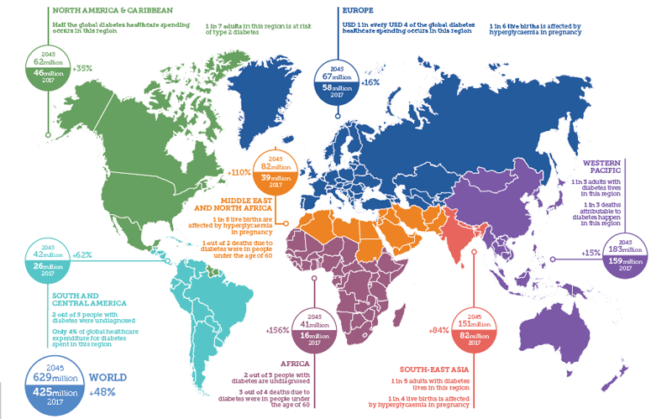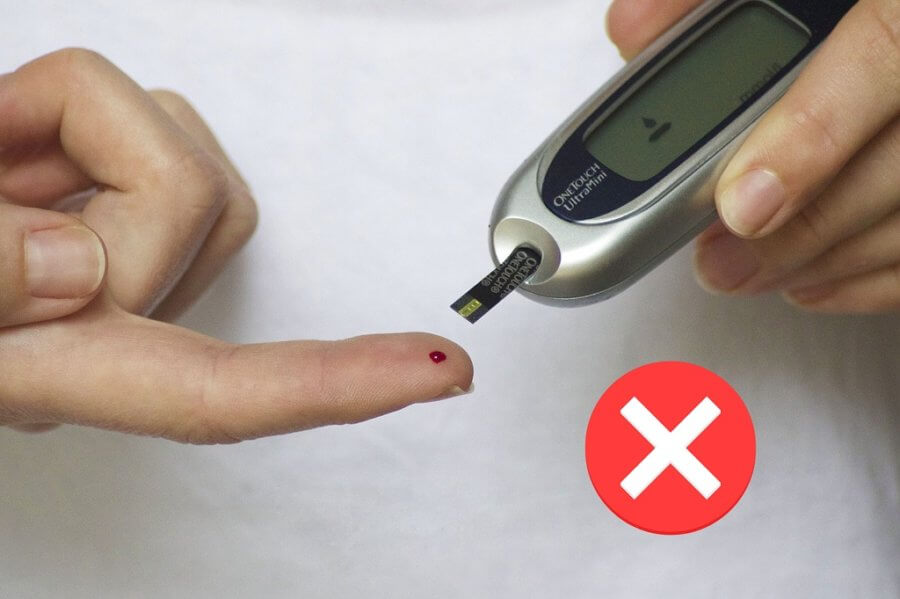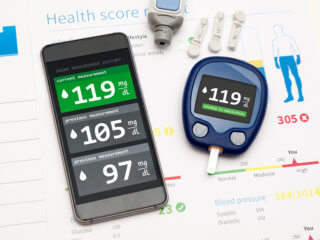Closed loop system for diabetes
Diabetes has become a very common issue in the past decade or so, which experts credit to rising obesity rates, sugar intake, stress, and sedentary lifestyles. In 2017, an estimated 425 million people were affected by diabetes around the world. Currently, there are approximately 415 million people living with diabetes. It is believed that those with Type 1 diabetes constitute 5% of those diagnosed and Type 2 are made up of the 90% to 95% of diagnosed cases.

Image courtesy of International Diabetes Federation
With this substantial increase in diabetes patients, doctors are struggling to keep up with the volume of patients needing care in some areas of the world. In response to this, the diabetes community has turned to digital solutions such as cloud based continuous glucose monitoring devices (CGM), cloud based glucose meters, Telehealth services, data management platforms, online diabetes prevention programs, and social media groups.
The majority of these solutions like the CGM, glucose meters, and data management platforms aim to make data collection easier, instead of having to manually enter or download their data from their glucose measuring devices and/or insulin pumps.
Social media groups aim to provide support for patients with peer to peer counselling and telehealth services connect the patient to their health care provider via webcam to reduce travel expenses and loss of time commuting between the doctor’s office and home.
These have revolutionized diabetes treatment by allowing management of their disease to take less time and for the data to provide a complete picture of the patients’ health. Patients have felt more empowered to self-care and have taken control of their treatment, no longer waiting for doctors to decide their every move.
Patients using the Medtronic minimed CGM have reported much success with the help of their devices, as have users of Glooko, a data entry platform, who reported being more willing to enter their data and look over it than with the traditional methods. Telehealth services have allowed doctors to conduct face-to-face discussions with their patients in regards to their treatment plans and recovery progress. Digital platforms have improved the provision of medical care for diabetic patients.
Closed loop system: The latest digital solution for diabetics
The artificial pancreas or closed loop system is a revolutionary new device that will make type 1 diabetics’ lives easier. Type 1 diabetics have to check their blood sugar very often, far more than the 2-4 finger pricks that type 2 diabetics are required per day.
The artificial pancreas is a hybrid device that starts with a sensor, which can be placed either on the abdomen or inside the abdomen of the patient. This sensor monitors the blood glucose levels constantly and sends instructions to the insulin pump attached to the sensor.
This allows correct insulin levels to be achieved much easier than the traditional way of checking and administering insulin manually. This minimizes the need for constant injections and finger pricking and will allow patients to have more freedom in their everyday lives. Hypoglycemic spells are reduced as well as sugar spikes. Potentially the most exciting part of this new system is that it will continue to monitor and correct insulin levels overnight, which leads to the user waking up feeling better every morning.
Medtronic, the company that invented the Minimed CGM is currently the leading startup developing closed loop systems. The Minimed is actually a precursor to the official artificial pancreas, the first hybrid system to be approved by the FDA. Therefore Medtronic has a very clear lead, but other companies haven’t thrown in the towel just yet. Bigfoot Biomedical is a close second in the race, giving Medtronic a run for their money.
In the past, insulin pumps have been used often for type 1 diabetics. This technology made the lives of diabetics easier, but frequent finger pricks were still required and the user had to manually set how much insulin to be released throughout the day.
Now with the closed loop system, finger pricks are eliminated and the pump is automatic. Essentially, diabetic’s daily pricking and injecting days are over. Now users can simply go about their daily lives, leaving the lancet and needles behind and only have to watch their diet and exercise routines.
Conclusion
Diabetes management has already been much easier in the past few years due to the advancements in digital solutions. Still, the closed loop system will prove to be of great use to those managing diabetes on a daily basis. There are very few drawbacks to the closed system, one being that diabetics under 14 cannot use it, and that is a relatively small flaw. One might say that the pump and the sensor being on the outside of the body is a drawback also, and perhaps one day there will be an artificial pancreas that is completely internalized. Another is the price, which is a hefty $5,000-$8,000.
When the system is released, it will only be available for type 1 diabetics but there are plans for it to be extended for type 2 diabetics to use. So for the first few years, it is likely that not very many people will have access to the artificial pancreas.
We assume that will change in the years to come when the technology is not quite as new and groundbreaking. That is perhaps the only way the artificial pancreas can realistically improve, is to become more affordable so that more people will have access to this life-saving equipment.
However, in the future, there will hopefully be progress towards a completely internalized device that is contained in the user’s body. The device will also be utilized for younger children. With these future improvements, the future of diabetes management is looking quite optimistic.
Image credit: www.pixabay.com

















